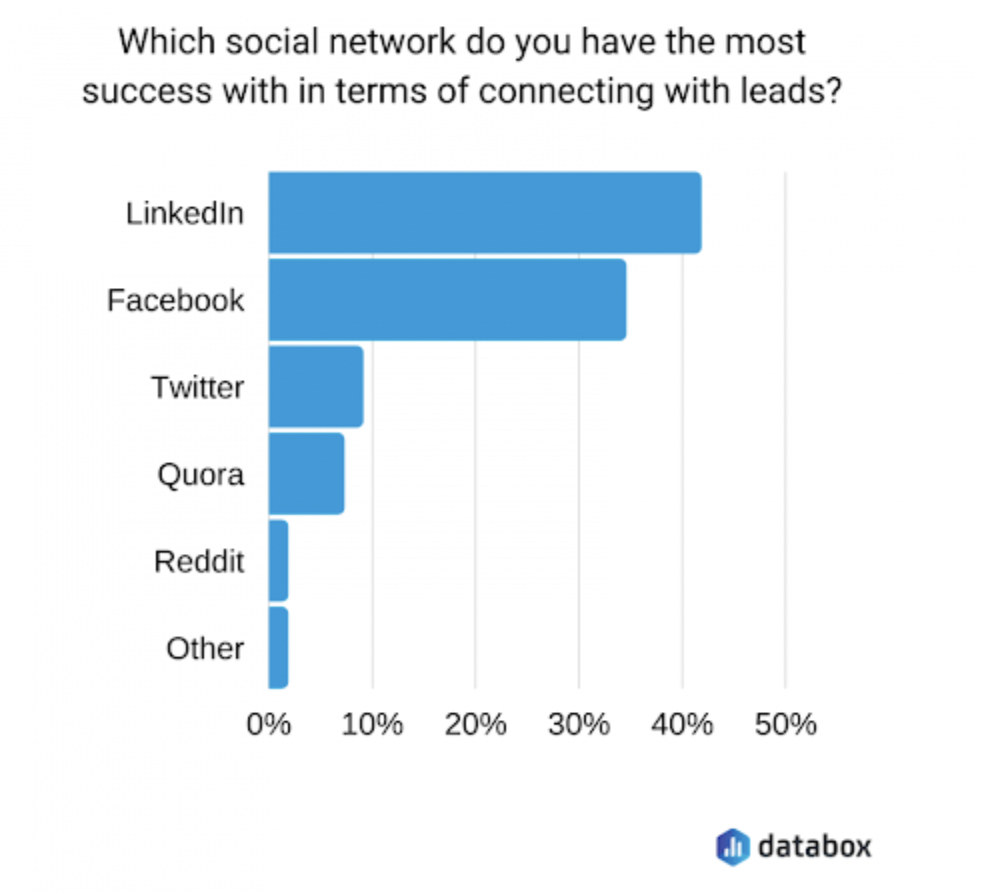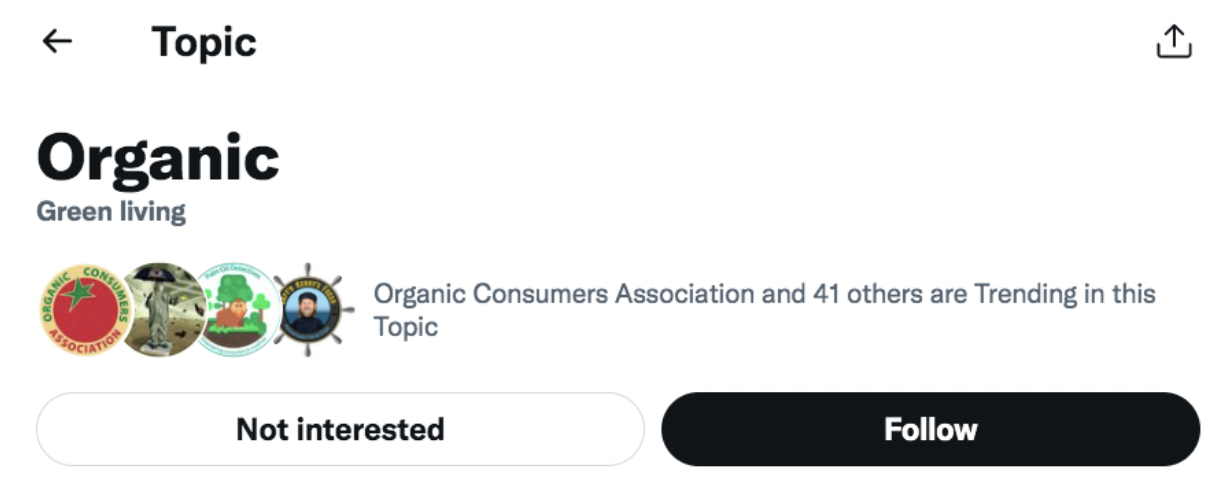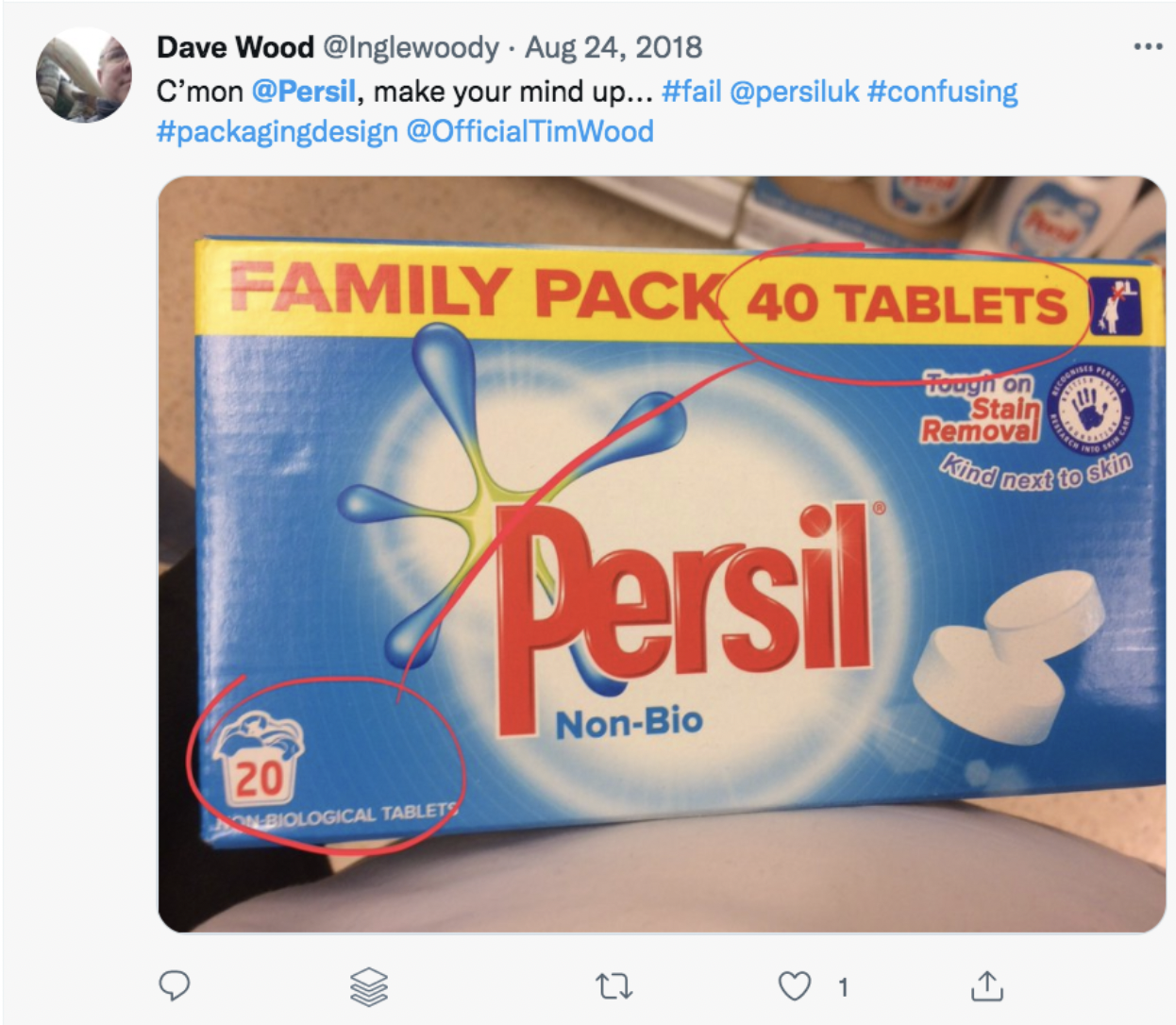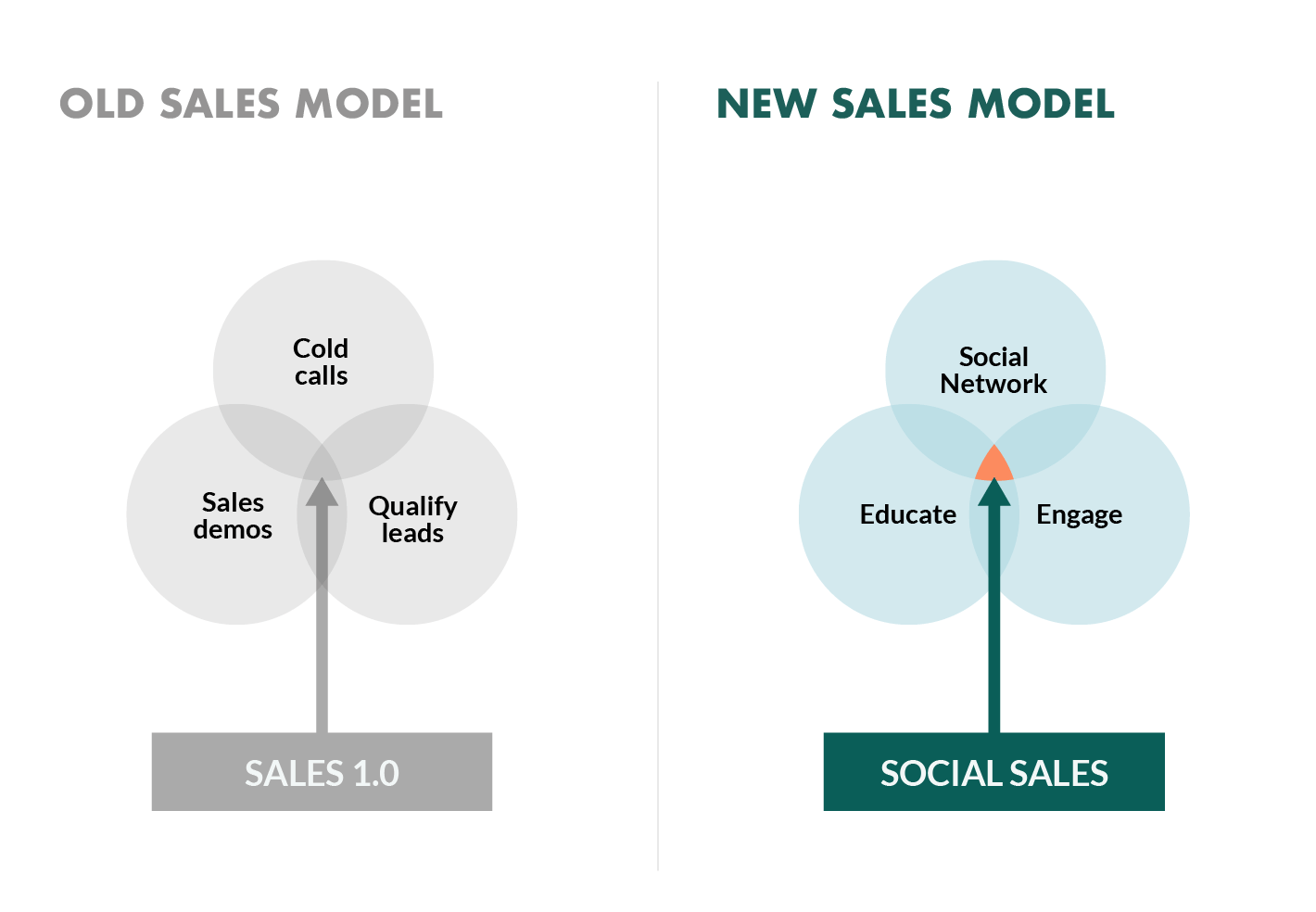The world of marketing and sales has evolved rapidly since the times when door-to-door salespeople tried to sell you something the first time they saw you. As general distrust for traditional sales methods grows, it's all about building connections and nurturing relationships with your prospects if you want to succeed.
With nearly 49% of the world’s population using social media, social selling has become a powerful sales tool that is outgrowing traditional sales practices and gaining disruptive momentum in today’s sales environment.
An effective social selling strategy can open up entirely new perspectives for marketing and sales. Already nine in ten top-performing salespeople say social platforms have an essential part in their sales strategy and play a key role in closing deals.
What Is Social Selling?
Social selling is a sales method that leverages social networks like Facebook, Twitter, and LinkedIn to:
- find the potential buyers,
- make contact with the potential buyers,
- understand their needs,
- forge meaningful relationships,
- and achieve your company’s sales goals
Social selling is not about spamming strangers with unsolicited messages. Instead, the sales reps need to approach this strategy in a much different way than they might approach a cold call. Social selling is a process of building relationships in a sales process by interacting, engaging, and connecting with your prospects via social media.
Benefits Of Social Selling
Done right, social selling can provide many benefits to your brand and business
1. Build Trust And Relationships
Trust is an important part of any buying/selling relationship. Social selling can allow salespeople to build trust with their leads by nurturing personal connections. Answering questions, providing timely responses, and offering valuable resources directly to the customers – all that allows you to build long-lasting sales relationships.
2. Increased Brand Visibility
Social selling can help to increase the number of potential buyers who see your brand online. When your employees optimize their social media profiles to convey persuasive messages about the product they sell, their networks notice your brand and what your organization has to offer.

3. Shorter Sales Cycle
Slow sales cycles mean that potential customers take long periods of time to make a purchase. It can be frustrating and make the work of salespeople more difficult. Most companies are looking for ways to make sales quicker and social selling can be one of them. Social selling can cut down the sales cycle by allowing you to interact with prospects at the right moment and answer their questions exactly when they have them.
4. More Quality Leads
Social media profiles can provide a lot of information about potential customers, making it easier to find quality leads that might be interested in your product. The information available on a potential customer’s page will help you understand their wants and needs and determine if what your sales team can offer seems to suit them.
5. Increased Web Traffic
When more employees share company content and your brand visibility increases, your website traffic grows too. Having more visitors on your website, in turn, gives you more opportunities to gain potential leads.
Social media can really boost your selling game. For anyone who still needs convincing, here are some strong statistics that will help you make up your mind and implement social selling in your strategies now:
- 97% of consumers go online to find and research products and services;
- 84% of C-level executives use social media in making purchasing decisions;
- By 2028, 80% of B2B interactions between buyers and suppliers will happen in digital channels;
- 78% of social sellers outsell peers who don’t use social media;
- Practitioners of social selling are 51% more likely to hit their quotas.
- 31% of B2B professionals say that social selling allows them to build deeper relationships with clients.
5 Social Selling Tips To Get You Started
1. Choose Your Channels
While social selling can be done via any social media platform, LinkedIn, Facebook, and Twitter are the most common ones due to the large number of professionals using these platforms. However, what works for one may not work for the next. Depending on your company and product, choose the social media platforms that are most appropriate to your target audience and potential customers.
For example, if you are targeting Generation X and Millennial consumers, you might want to focus your efforts on Facebook rather than Tik Tok. Similarly, if you sell B2B and are looking to identify and reach business decision-makers, LinkedIn is a more fitting platform to focus on than Pinterest. YouTube can be great for sharing video tutorials and explaining complex ideas, while Facebook Groups are a useful tool for reaching new audiences.
In all cases, remember that on top of exploring what platforms your ideal customers are frequently using, it’s equally important to ensure that your salespersons have a strong and trustworthy social media presence in the chosen platforms too.

2. Optimize Your Social Media Accounts
Your company’s image is just as important in the digital world as it is in the real world. This is why it is crucial that your company’s social media profiles are relevant and up to date. Potential customers should be able to visit them and find all the information they’re looking for – from current offers to ways of reaching out to your team.
However, when it comes to social selling, your company’s accounts aren’t the only touch points your brand can have with a customer on social media. The personal accounts of your salespeople are just as important. Optimized personal social media accounts can greatly help to support your selling efforts as buyers are much more likely to communicate with a salesperson who comes off as a thought leader in their industry.

To optimize your personal accounts for selling, use some of these techniques:
- Use a professional picture that makes you look trustworthy and friendly.
- Mention your job title and the company you work for on all the profiles you will be using for social selling.
- Make sure your bio is written with a potential prospect in mind. Don’t forget to provide your contact details.
- Create relevant content about the industry you work in.
- Share content from trustworthy sources to show that you’re learning from other thought leaders in your field.
- Join social media groups where your potential customers are in.
- When you interact with potential clients, be confident but approachable.
3. Find Your Prospects
According to a survey, 40% of B2B sellers report that social selling reduces the amount of time spent on prospecting. Indeed, social media can be a powerful tool for connecting with new contacts. For example, on LinkedIn you can use the search feature and filter users by keywords, location, job titles, industry, and more.
By including the attributes of your ideal customer in your search, you will find useful contacts to reach out to and connect with individuals and companies with a need for your products or services. If you are ready to take your prospecting to the next level, explore LinkedIn Sales Navigator that provides advanced search insights, lead recommendations, and can even connect with your CRMs.
While LinkedIn is the place for business connections, Twitter can offer a better search function and has a lower barrier to entry as you can follow anyone you want and they don’t have to accept your request as they do on LinkedIn or Facebook.
On Twitter, try searching for relevant topics or certain industry-specific hashtags to see what your prospects are talking about. When you’ve found a few interesting prospects, they can lead you to others since you can see who they are following.

4. Understand Prospects Through Social Listening
Social listening means tracking social media platforms for mentions and conversations related to your product or brand, then analyzing them and using the insights to discover opportunities to act.
From a sales perspective, social listening can help you discover the types of conversations that your current and potential customers are having and allow you to better understand buying signals and intent.
If you don’t know where to start, look out for the following types of terminology:
- Words like “help,” “tips,” and “recommend,” indicate that a prospect is looking for answers that could guide them toward a sale.
- Terms that are specific to your product can indicate a level of awareness that suggests a buying intent.
- If your business serves specific geography, look out for references to your location and you might discover buyers in your area.
- Words like “sale,” “price,” and “cost,” suggest that a prospect is ready to buy.
- Monitor when prospects are specifically discussing your brand and jump into the conversation to provide answers.

5. Track Relevant Metrics
Learning from what you have already tried is the best way to save time and maximize ROI with social selling. By collecting data and insights from your past efforts, you will be able to tell what works and doesn’t work and adjust your strategies accordingly.
There are several different social selling metrics your team should constantly be monitoring:
- Keep track of the content engagement rate by monitoring shares, likes, or comments on your posts.
- Monitor link clicks to see if you are providing engaging content to your followers. Use URL shorteners that provide detailed analytics on the performance, customer data, and audience engagement.
- Measure the rate at which people respond to the messages you’ve sent them to gain insight into how well you are engaging with new prospects.
- is a straightforward metric that can give you an excellent overview of how your social selling efforts help you connect with your intended audience. Keep track of all the followers or connections you are gaining to see the increase in brand awareness – a broader network means more opportunities.
Use the LinkedIn social selling score to measure how effective your business is in setting up your professional brand, targeting the right prospect, engaging with insights, and building relationships.

Your Social Selling Check-list
Social selling has become an integral part of every reputable organization’s blueprint for sales success. However, it doesn’t simply begin and end with creating a social media profile and uploading some posts. Keep in mind this check-list when you get started with your social selling strategy:
- Define your social selling goals and know what you want to achieve.
- Determine your target audience or buyer persona.
- Identify the social platforms your audience engages with the most.
- Build a strong presence on the most relevant social media platforms and help employees build their personal brand.
- Beat the competition by selling unique custom-made products
- Provide value and create content that people actually want to share.
- Align your social media marketing strategy with your social selling strategy to help you boost your sales goals.
- Set up metrics to track your social selling performance.
Social media provides a unique opportunity for salespeople to connect with prospects and customers. Never before has the distance between seller and buyer been so short. Use these social selling tools and strategies to establish credibility and develop relationships that eventually will lead to sales. And don’t forget to test your approach and continually optimize to reach better results.
Author
Alexander Bickov
UX designer, creative thinker, and problem solver with 15+ years of experience in digital product design and growth marketing. He is a strong believer in the power of design and its ability to provide meaningful and emotional connections. His main goal is to connect people and products using strategy, creativity, and technology. Alex is writing stories and lessons he learned as a designer and entrepreneur about human-centered design, product design, design systems, inclusive design, rapid prototyping, and user research.




